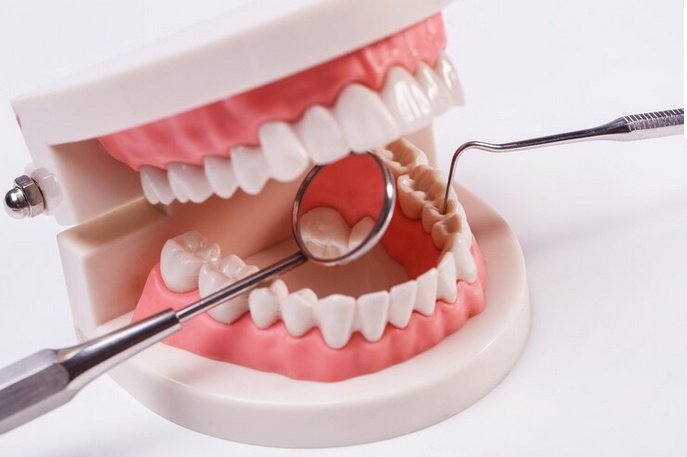Introduction:
Teeth fillings are a common dental treatment aimed at restoring teeth damaged by decay or trauma. Understanding the different types of fillings, the procedure, and their importance in maintaining oral health is essential for making informed decisions about dental care. In this guide, we'll delve into the intricacies of teeth fillings, shedding light on their purpose, materials, procedure, and aftercare.
Understanding Teeth Fillings:
Teeth fillings are dental restorations used to repair cavities, cracks, or other damage to the tooth structure. When tooth decay occurs, bacteria erode the enamel, creating small holes or cavities. If left untreated, these cavities can progress and compromise the structural integrity of the tooth, leading to pain, infection, and potential tooth loss. Fillings help restore the tooth's shape, function, and strength, preventing further decay and preserving oral health.
Types of Dental Fillings:
-
Amalgam Fillings: Amalgam fillings, also known as silver fillings, have been used for decades to fill cavities. They consist of a mixture of metals, including silver, mercury, tin, and copper. Amalgam fillings are durable, cost-effective, and long-lasting, making them suitable for restoring teeth in areas subjected to heavy chewing forces, such as molars.
-
Composite Fillings: Composite fillings are made of a tooth-colored resin material that blends seamlessly with natural tooth enamel. They are a popular choice for filling cavities in visible areas of the mouth, as they can be color-matched to the surrounding teeth, providing a more aesthetic result. Composite fillings bond directly to the tooth structure, preserving more of the natural tooth and requiring less removal of healthy enamel.
-
Ceramic Fillings: Ceramic fillings, also known as porcelain fillings or inlays/onlays, are custom-made restorations fabricated in a dental laboratory and bonded to the tooth. They are highly durable and resistant to staining, making them an ideal choice for restoring teeth in the front of the mouth. Ceramic fillings offer excellent aesthetics and biocompatibility, mimicking the natural appearance of teeth.
-
Glass Ionomer Fillings: Glass ionomer fillings are made of a mixture of glass and acrylic, providing a translucent appearance similar to natural tooth enamel. They release fluoride, which helps prevent further decay and strengthen the surrounding tooth structure. Glass ionomer fillings are often used for small cavities in areas with less stress, such as non-load-bearing surfaces or in pediatric dentistry.
The Dental Filling Procedure:
The process of getting a dental filling typically involves the following steps:
-
Examination and Diagnosis: During a dental examination, the dentist assesses the extent of tooth decay or damage using visual inspection, dental probes, and X-rays. Based on the findings, the dentist recommends the most appropriate type of filling for the specific situation.
-
Tooth Preparation: Before placing the filling, the dentist numbs the area with a local anesthetic to ensure a comfortable experience. The decayed or damaged portion of the tooth is removed using a dental drill, leaving behind a clean, healthy tooth structure.
-
Filling Placement: Once the tooth is prepared, the dentist applies the chosen filling material in layers, shaping it to match the natural contours of the tooth. For composite fillings, a special light is used to harden the material and bond it to the tooth surface. The filling is then polished to achieve a smooth finish and proper bite alignment.
-
Final Adjustment: After the filling is placed, the dentist checks the patient's bite to ensure proper occlusion and makes any necessary adjustments to ensure comfort and functionality.
Aftercare for Dental Fillings:
Proper aftercare is essential for maintaining the longevity and effectiveness of dental fillings. Here are some tips for caring for newly placed fillings:
- Practice good oral hygiene by brushing your teeth twice a day and flossing daily to remove plaque and bacteria.
- Avoid chewing on hard or sticky foods that could damage the filling or cause it to dislodge.
- Attend regular dental check-ups and cleanings to monitor the condition of your fillings and address any issues promptly.
- Be mindful of any sensitivity or discomfort around the filled tooth and report it to your dentist if it persists.
Conclusion:
Teeth fillings play a critical role in preserving oral health and restoring teeth damaged by decay or trauma. By understanding the different types of fillings, the procedure, and proper aftercare, patients can make informed decisions about their dental treatment and maintain healthy smiles for years to come. Whether it's amalgam, composite, ceramic, or glass ionomer fillings, each type offers unique benefits and considerations, tailored to meet the individual needs of patients. By working closely with their dentist and following a comprehensive oral hygiene routine, individuals can ensure the success and longevity of their dental fillings, filling in the gaps for a healthy, functional smile.


No comments yet